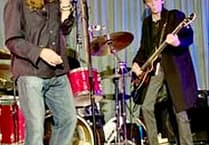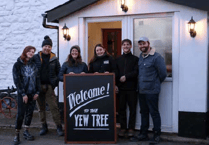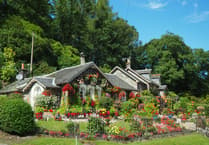AN exhibition giving the latest update on research into Cinderford’s ‘Tin Tabernacle’ was held on Saturday (July 15).
There was a large attendance at the event held at The Wesley centre in Belle Vue Road, Cinderford and people heard from Jason Griffiths of the University of Gloucestershire and Roger Deeks about the history of the Bilson Mission.
The talk looked at the social history of Bilson and Cinderford and its growth as ‘boom town’ in the 19th century.
The growth of the church and evangelical ‘missions’ such as to the Gypsy and traveller communities in the Crump Meadow and the emergence of the Corrugated Iron Mission or tin tabernacle were explored, leading to it being called the Gypsy Church.
Maps and archival material tracked the moves of the Mission as it was relocated in its early years before becoming extended and consolidated in the 1930s.
The Mission had a unique place in the local community and reflected the strong fellowship that bound a mining community together.
Jason said: “We were delighted with the turnout for the event and the contribution of everyone involved.
“The whole event captured the amazing history of the Mission and its importance to the local community for over 140 years.
“We are grateful for the support of Historic England, Cinderford Town Council and St Stephen’s parish for their support.’
Roger added: “Many of the visitors shared their stories about the Mission, George Lees and Thomas Witts, who were major figures in the history of the Mission.
“The mission is gone but won’t be forgotten through the work of the project.’
The project leaders hope there will be opportunities to see the exhibition at other venues in the future.
A book will be published this autumn that will tell the story of Bilson Mission.
There was also an opportunity to remember some of the favourite hymns at the Mission and tea and cake was served by members of Forest of Dean Brass.




